The USAID and NREL Quarterly Newsletter
April 2023 Edition
In this edition, learn about a high-fidelity wind data set for Southeast Asia, explore sustainable transportation activities in Colombia and around the world, and discover how technical training is promoting gender equality in the power sector.
Subscribe to receive this newsletter via email.
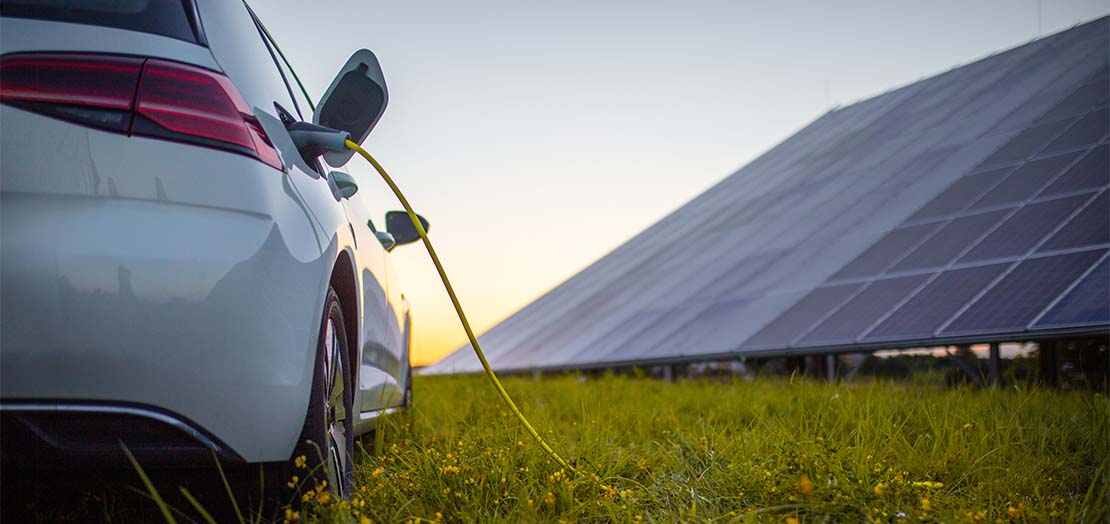
Contents
Going the Distance With Sustainable Transportation
High-Fidelity Wind Resource Data Set for Southeast Asia Informs Renewable Energy Development
USAID Sponsors U.S. Study Tour for System Operator Staff From Ukraine
Action Plans Promote Variable Renewable Energy and Sustainable Transportation Across Colombia
Going the Distance With Sustainable Transportation
It is no surprise that the transportation sector is a target for reducing emissions and making the global energy transition a reality. At NREL, our state-of-the-art research and analysis cover all areas of the transport sector and examine the different fuels and network improvements that can make each travel mode more sustainable.
Through our work with USAID, we connect and collaborate with international partners to maximize the impact of sustainable transportation projects, such as promoting equitable access to clean mobility, and safe and reliable transportation systems that improve lives and enable economic growth. Although every region faces unique challenges in achieving transport decarbonization, the USAID-NREL Partnership has developed successful methods and tools to provide cross-cutting and customized technical assistance and analysis that support clean energy and transport solutions.
The USAID-NREL Partnership has provided transportation-focused technical assistance around the world, including in Bangladesh, Colombia, Lao PDR, Mexico, Pakistan, Thailand, and Vietnam. We recently supported stakeholders in Thailand with understanding the jobs and economic impacts of a fuel transition in the transport sector. Additionally, we continue to support Lao-PDR to evaluate electric fleet transition and associated grid impacts. Ongoing work with stakeholders in Colombia is focused on preparing the country for reaching its ambitious electric vehicle targets, both nationally and in the city of Bogotá. This collaboration included the development of a Bogotá-specific version of NREL's EVI-Pro model to aid planning the future electric vehicle charging network based on citywide travel patterns and vehicle deployment scenarios.
The recent 2023 Transforming Transportation conference highlighted critical focus areas for Accelerating Toward Green and Inclusive Mobility: the need for inclusive and safe travel options that work for all segments of the population; the need to make public transportation accessible and safe; the need to create multiple options, including and not limited to active and nonmotorized modes; the need for transport to be analyzed through a systems approach; and finally, a focus on cities as clean, inclusive, and safe travel hubs that can be replicated and scaled up. Our transport work under the USAID-NREL partnership will continue expanding efforts and developing capabilities to help partners achieve their sustainable transport and decarbonization goals, which can be seen in the variety of project types, from systemwide transportation decarbonization to electrification of two- and three-wheelers and micromobility. We are committed to enabling just energy transitions throughout our transportation projects to reduce gender- and income-based disparities in access to safe, reliable, and clean transportation.
Throughout this newsletter, learn about this quarter's featured sustainable transportation topics, such as a series of action plans in Colombia and a Q&A with our transportation lead. Learn more about our sustainable transportation capabilities and impacts by watching our video. If you're interested in learning more, visit our website or reach out to us.
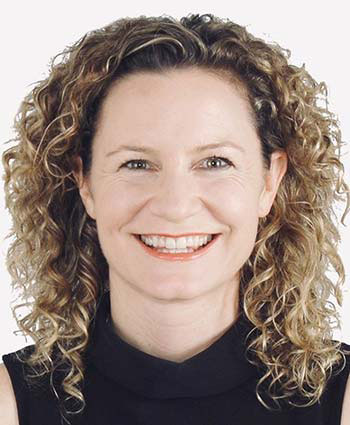
Best,
Daniella Rough
International Project Manager
National Renewable Energy Laboratory
What's New
High-Fidelity Wind Resource Data Set for Southeast Asia Informs Renewable Energy Development
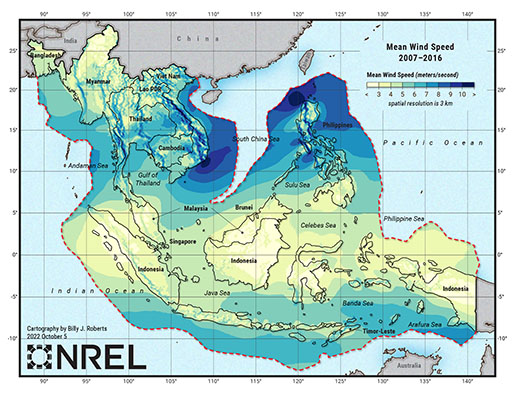
Using the Southeast Asia Wind Resource Data Set, NREL researchers created a high-fidelity map of mean wind speeds across the region from 2007 to 2016. Image by Billy Roberts, NREL
The Advanced Energy Partnership for Asia is proud to release a high-fidelity, time series wind resource data set through the Renewable Energy (RE) Data Explorer. This first-of-its-kind public data set contains wind data for Southeast Asia at a 3-km spatial and 15-minute temporal resolution over a 15-year period.
Building on existing data and models, NREL researchers overcame the computational challenges that had been a barrier to producing long-term wind resource data sets. The team coupled the Weather Research and Forecasting model with a novel machine-learning approach called Generative Adversarial Networks.
The Weather Research and Forecasting model is considered the standard for producing high-fidelity wind data, but beyond a resolution of 9 km, it was not feasible to produce a high-resolution, 15-year data set for Southeast Asia. To resolve this, NREL's team refined the 9-km Weather Research and Forecasting data using Generative Adversarial Networks to produce 3-km, 15-minute wind data with comparable accuracy and 16 times better computational efficiency than the Weather Research and Forecasting model alone. With USAID's support, these data are freely available to the public through the RE Data Explorer.
Paired with the high-fidelity solar resource data set for Southeast Asia, policymakers, energy analysts, and the private sector are empowered to advance the energy transition in Southeast Asia and use this data to inform project siting, target setting, and other energy sector decisions.
Learn more in the fact sheet about the development of the Southeast Asia wind data.
Register for the upcoming webinar Transforming the Global Power Sector: Open Tools and Data for Renewable Energy Integration.
Visit RE Explorer to use the data and explore the site's training material, knowledge products, and resources.
Learn how RE Data Explorer is valuable for users in project development and decision-making: RE Data Explorer Is Expanding Public Access To High-Quality Data and Analytics.
USAID Sponsors U.S. Study Tour for System Operator Staff From Ukraine
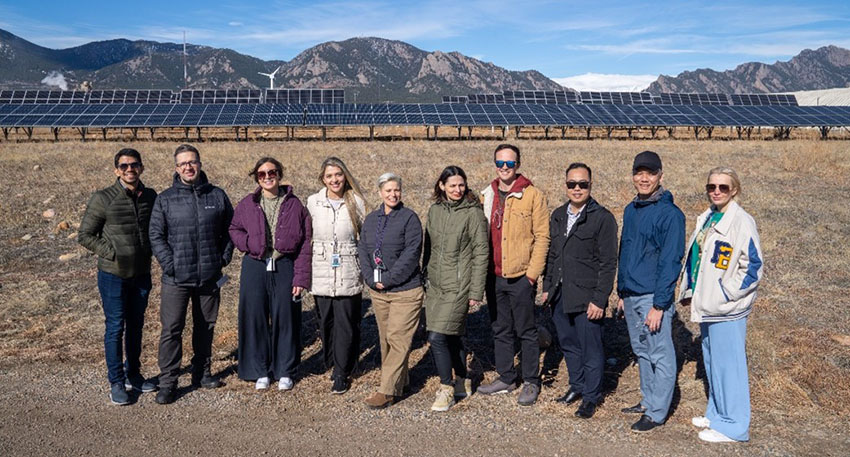
With support from USAID, a pair of engineering staff from Ukraine's system operator, UkEnergo, participated in a 10-day U.S. study tour hosted by the Global Power System Transformation (G-PST) Consortium. Through support from the U.S. Department of Energy Office of International Affairs and Department of State, the UkEnergo staff were joined on the tour by other system operations peers from Compañía Expertos en Mercados in Colombia and the National Load Dispatch Centre in Vietnam.
The tour began with 3 days on NREL's campus. The visiting partners participated in discussions with NREL staff to advance ongoing work on priority system operations topics. They also visited NREL's Energy System Integrations Facility, the National Wind Technology Center, and the control room at Xcel Energy to learn how Xcel manages power systems with high contributions of renewable energy.
Following the visit to Colorado, the group traveled as part of NREL's G-PST team to the Energy System Integration Group Spring Technical Workshop in Tucson, Arizona, for a week of seminars and networking.
This study tour represented the first official engagement between G-PST and UkrEnergo. It is the start of a series of exchanges, supported by USAID, related to variable renewable energy integration, renewable energy and energy storage siting, and power system flexibility and capacity adequacy. These exchanges support power system reliability and grid reinforcement as Ukraine strives to build a strong energy system. The organizations hope to partner on these and other projects over the coming years to strengthen Ukraine's power system resilience.
Learn more about this study tour.
Action Plans Promote Variable Renewable Energy and Sustainable Transportation Across Colombia
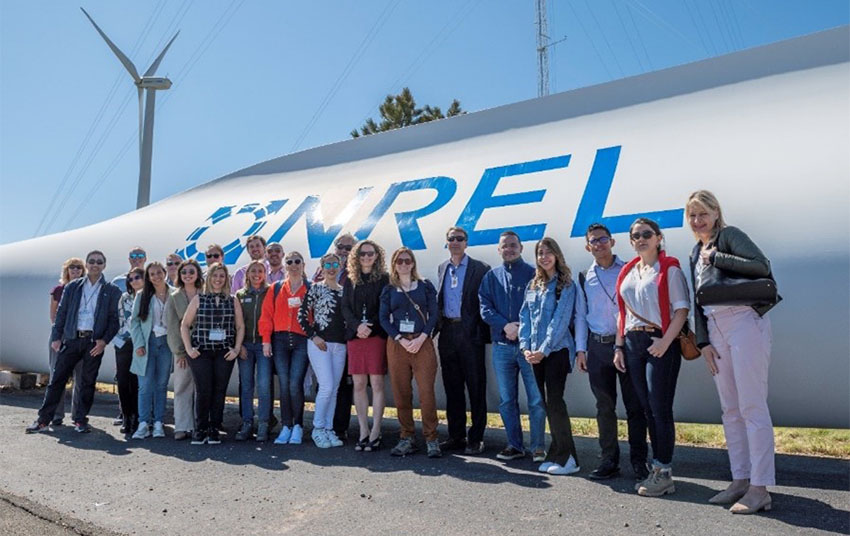
Since 2020, a cross-organizational team composed of the USAID-NREL Partnership; USAID's Scaling Up Renewable Energy program, implemented by Tetra Tech; and the United States Energy Association has led the Young Leader's Workforce Training Program for Colombia. This program provided training, mentoring, and research assistance to a diverse group of participants from across Colombia's energy sector with the aim of enhancing Colombia's ability to integrate growing volumes of variable renewable energy.
As part of the program's capstone activities, four teams from distinct Colombian energy sector organizations worked with NREL researchers and the broader development team to apply their training and experience by crafting individual action plans for their organizations. The action plans cover a range of energy transition topics at the local and country-wide level.
Early Adopters Work To Accelerate Electric Vehicle Transitions in Boyacá, Colombia: Empresa de Energía de Boyacá, an integrated electricity service and retail provider, outlined a plan to transition the organization's rental vehicle fleet to electric vehicles.
Forecasting Distributed Photovoltaic Adoption in Barranquilla, Colombia: The Association of Renewable Energies Colombia modeled the adoption of distributed solar photovoltaics in Barranquilla through 2050 using NREL's Distributed Generation Market Demand (dGen) tool.
Planning for Electric Vehicle Charging Infrastructure in Bogotá: Grupo de Energía Bogotá developed a tailored version of NREL's Electric Vehicle Infrastructure—Projection Tool (EVI-Pro) to model the charging infrastructure needed to support EV integration in Bogotá.
Regulatory Road Map for Distributed Energy Resource Interconnection and Interoperability: Colombia's Energy and Gas Regulatory Commission proposed a regulatory roadmap to update the distribution grid code for the interconnection, interoperability, and integration of increasing distributed energy resources.
These action plans not only showcase the success of the Young Leader's Workforce Training program but also demonstrate how cross-organizational collaboration between U.S. institutions and in-country partners can accelerate decarbonization efforts throughout Colombia's energy sector. Additionally, the investment in regionally tailoring NREL's state-of-the-art tools, such as the Electric Vehicle Infrastructure Projection Tool model for Bogotá and the EV fleet transformation calculator for Empresa de Energía de Boyacá, means that stakeholders all over Colombia can now leverage their capabilities for their own applications.
Women in Power System Transformation Advances Gender Equality in the Power Sector Through Cutting-Edge Technical Training
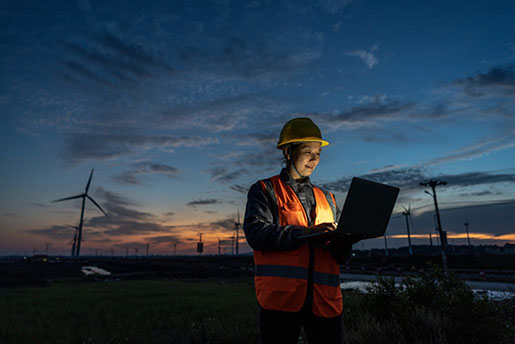
The Women in Power System Transformation (PST) initiative released a free, university-level course package consisting of prerecorded lectures and student assignments on cutting-edge power system topics. These course materials are designed to support universities around the world with staying at the forefront of power system transformation education, although they can be accessed and used by individual practitioners as well.
The technical teaching materials are accompanied by inspirational videos sharing women's journeys to leadership in power system careers. Links and resources to introductory information on gender equality provide a foundation for university faculty and course instructors to leverage these learnings in the classroom and support Women in PST's vision of training a gender-inclusive power sector workforce of the future.
Development of the teaching materials was just one part of Women in PST's accomplishments over the past year. Women in PST sponsored an internship program that focused on building advanced knowledge and skills for renewable energy integration. Women in PST also sponsored staff from Colombia's XM, Indonesia's PLN, and Grid India to participate in USAID's Workforce Gender Equality Accelerated Program in Vienna, Austria, that enables participants to take targeted, tangible, and strategic action, grounded in assessment, to increase gender equality in their organization.
Learn more in a video highlighting the intern's experiences and the impact of the Women in PST program so far.
Download the Women in PST university-level course materials.
Modeling and Forecasting Energy Load in the Philippines for Long-Term Power Systems

As the Philippines progresses toward its ambitious decarbonization and development goals, modeling will continue to play a prominent role in its energy system planning. The Philippines' is taking concrete steps toward decarbonization by integrating variable renewable energy and distributed energy resources into its power sector, planning for sustainable transportation, and estimating potential increases to end-use electricity usage (e.g., cooling). As electrification continues, the Philippines needs to plan for increased load on its energy system.
The USAID-NREL Partnership collaborated with researchers at Lawrence Berkeley National Laboratory and the Philippines Department of Energy on a report highlighting best practices in enhanced load modeling and forecasting for the country's power system. The report outlines relevant case studies, modeling and analysis tools, stakeholder engagement strategies, and how to acquire and manage data. The Philippines Department of Energy, as well as other decision makers in the Philippines, can use the report's content to determine which load forecasting and modeling methods may be most appropriate.
This report complements existing analysis developed by the USAID-NREL Partnership that supports the Philippines' efforts to integrate more variable renewable energy resources. Previously, the USAID-NREL Partnership team worked with the Philippines Department of Energy and National Grid Corporation of the Philippines on developing a Competitive Renewable Energy Zones planmeant to inform how the Philippines will build out new transmission networks. Earlier this year, the Philippines government approved the transmission plans proposed through the Competitive Renewable Energy Zones project, which will lead to development of competitive renewable energy zones throughout the country.
Learn more in Best Practices in Electricity Load Modeling and Forecasting for Long-Term Power System Planning.
Team Spotlight: Meet Sanjini Nanayakkara
Sanjini Nanayakkara leads international projects across multiple global initiatives that provide planning and technical support for transitioning transport systems to low and zero emissions. She is a chemist by training and received her doctorate in analytical chemistry from Pennsylvania State University in 2006. She joined NREL in 2010, where she researched new materials for solar energy conversion prior to following her passion for clean energy deployment. At present, Nanayakkara manages sustainable transportation projects for the USAID-NREL Partnership, Global Climate Action Partnership (formerly Low Emissions Development–Global Partnership), and she also serves as the coordinator for transport-focused work with Net Zero World.
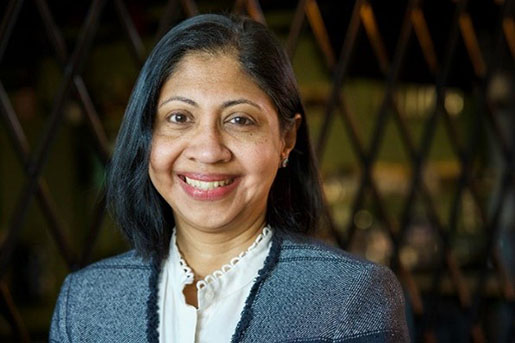
What first inspired you to work on international projects through the USAID-NREL Partnership?
What inspires me the most about the USAID-NREL Partnership is the passionate project
management team and the dedicated NREL technical teams, specifically colleagues whom
I work with most often in our Center for Integrated Mobility Sciences and Grid Planning
and Analysis Centers. As a collective, we have been able to deliver comprehensive
planning and technical support to our developing country partners and have moved the
needle toward decarbonization through customized, integrated, sustainable transport
sector policy and pilot project support activities.
Tell us about a sustainable transportation project that you are really excited about
right now.
I am very excited about our current work in Lao-PDR. This is a 2-year-long project
with many deliverables, and it is exciting to see our integrated approaches starting
to take shape. We are supporting Lao-PDR in developing a customized tool to gather
travel and mobility data, evaluating key aspects of a fleet transition and grid impacts
of transport electrification, and understanding the benefits of gender-inclusive strategies
ranging from enabling a gender-balanced travel population to employment in the sector.
Why is it important to work with developing nations on deploying advanced and sustainable
transportation systems?
When it comes to effectively mitigating climate strategies, it is imperative that
global strategies and activities be unified as much as possible. While it takes significant
time to implement new policies and build infrastructure for new technologies, it is
also necessary to formulate strategies that reduce our carbon footprint as a society.
Progress can be made via regional peer-learning and understanding lessons across the
world. There is no one-size-fits-all strategy that can work for all countries. Sharing
our knowledge with developing countries to support advancing their technical knowledge
and capacity to be able to formulate plans that work for their local context is a
critical step toward global decarbonization.
If you could give any advice to young or early-career researchers or persons in the
energy systems field, what would it be?
My advice to early-career researchers is to not be too worried about finding a career
that you think should last your whole lifetime, but to always be open to new experiences
that could shift your passions over time and set yourself up to be able to make career
transitions. I was a staff scientist initially at NREL, actively involved in lab-based
experimentation, before moving on to the role of a project manager for international
projects. While transitioning my career took a course of multiple years, I was able
to attain the level of knowledge and experience required to make it my full-time role
at NREL by being open to new work experiences. Always follow your passion, as it will
provide the best motivation! Never stop learning, as you never know when you could
find something else that might interest you as well.
Finally, tell us a little bit about yourself. How do you like to spend your time outside
of work?
My spouse and I have our hands full with two teen girls, and our lives just seem
to rotate around all their priorities! Our daughter just turned 16, and our niece,
who is 20 and is a sophomore at University of Colorado Denver, lives with us, so sometimes
it feels like all we do on weekends is cook and eat all day long or just watch movies.
I try my best to instill "no electronics" days over the weekends, and now that it's
spring and summer in the U.S., we will spend a lot of time outdoors with our two rescue
dogs as well. One day, I want to be able to say that we have visited every national
park in the U.S., so that's a fun goal that we are working toward.
Resource Round-Up
Find all the publications, events, and resources outlined in this newsletter at a glance.
Tools, Data, and Expert Assistance
Southeast Asia Wind Data Now Available on RE Data Explorer
The USAID-NREL Partnership is excited to add wind resource data for Southeast Asia to the RE Data Explorer. The Southeast Asia wind resource data set features publicly accessible 3-km spatial resolution 15-minute time series wind data to promote data-driven decision-making and empower regional users to explore decarbonization pathways. The full 15-year data set is now available. Explore the Southeast Asia wind resource data set on RE Data Explorer.
Free Trainings
June 6–7, 2023: Transforming the Global Power Sector: Open Tools and Data for Renewable Energy Integration
Training the Workforce of the Future: Gender Equity Resources and Free Technical Teaching Materials
Must Reads
RE Data Explorer Is Expanding Public Access to High-Quality Data and Analytics
High-Resolution Southeast Asia Wind Resource Data Set
USAID Colombia Young Leaders Workforce Training Program Action Plans
Early Adopters Work To Accelerate Electric Vehicle Transitions in Boyacá, Colombia
Forecasting Distributed Photovoltaic Adoption in Barranquilla, Colombia
Planning for Electric Vehicle Charging Infrastructure in Bogotá
Regulatory Road Map for Distributed Energy Resource Interconnection and Interoperability
Clean Energy Co-Benefits: Air Quality, Health, and Just Energy Transitions
Enabling Advanced Energy Systems for Clean, Secure, and Sustainable Economic Growth Across Asia
Must Watch
Sustainable Transportation Capabilities and Impacts of the USAID-NREL Partnership
Empowering Women To Lead Power Systems Transformation
Teaching Materials
Access free, university-level Women in Power System Transformation teaching materials
Share


